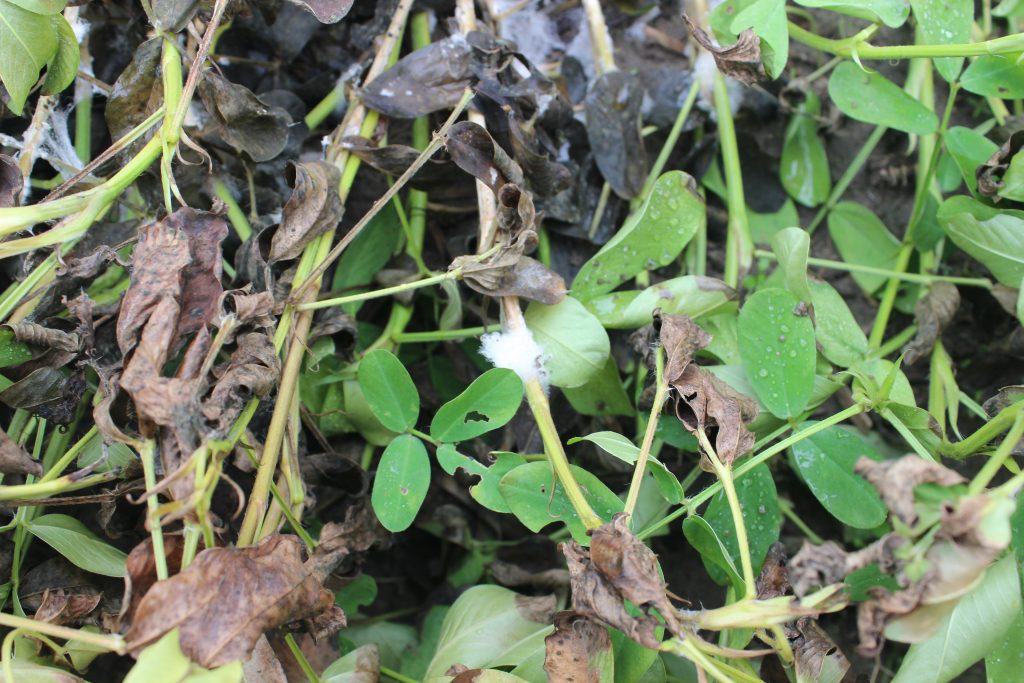Recent rains and cooler temperatures have maxed out out the risk for leaf spot and Sclerotinia blight of peanuts. In fungicide trials at the Tidewater AREC in Suffolk, VA I counted 9 hits of Sclerotinia blight in 70 row-ft in one untreated plot. Late leaf spot was evident at low levels in the lower canopy as well. Hopefully 2 preventive sprays have been made for leaf spot, but many growers may not have made an application for Sclerotinia blight at this time.
I know my above comments sound like doom and gloom, but growers typically have less disease pressure than we do at our experiment station as they use longer crop rotations. Most of our plots are on a 2-3 year rotation where most growers in Virginia rotate land to peanuts every 4 or more years. Crop rotation remains our best tool to reduce risk of disease losses in peanuts in the Commonwealth.
Peanut leaf spot can occur in all peanut fields, but soilborne diseases such as stem rot and Sclerotinia blight are problems in less than half of production fields, which is a good thing. Most growers know which fields they have problems with these diseases which allows them to treat them differently than most fields. With Sclerotinia blight risk high and already observed, growers need to make preventive fungicide applications of fungicides specific to this disease. if an application of Miravis/Elatus has been made in the last 10-14 days you should be good for another 10-14 days depending on weather conditions. If you haven’t applied a fungicide that effectively controls Sclerotinia blight, I recommend Omega 500 at 1 – 1.5 pts tank-mixed with a leaf spot fungicide in fields with histories of the disease. I also advise growers to scout these fields to determine if disease is present and to assess the effectiveness of fungicides already applied. The best place to look for Sclerotinia blight is in the largest, deepest vines in the field and in low areas that tend to hold moisture longer. The disease may cause leaves to wilt on individual stems (flagging) and tan, necrotic tissue that has white, fully fungal growth can be observed on these stems near the stem base beneath the canopy. See picture of typical Sclerotinia blight on peanut stems in the image below.

You may see flagging from Tomato Spotted Wilt Virus (TSWV) but no lesions on stems or fungal growth is present. I have had to take a closer look at several plants that had flagging leaves only to find that it was TSWV causing symptoms.
Typically a follow-up spray for Sclerotinia blight is warranted 21 days after the initial application of Omega 500. If you are using the 2-spray program of Miravis/Elatus there is no need to make an application of Omega 500 unless you are more than 30 days prior to harvest and disease pressure and weather conditions pose a high risk of severe damage.
If you have questions related to peanut disease management please feel free to contact me.
David Langston – e-mail dblangston@vt.edu, cell (757) 870-8498, office (757)807-3536
